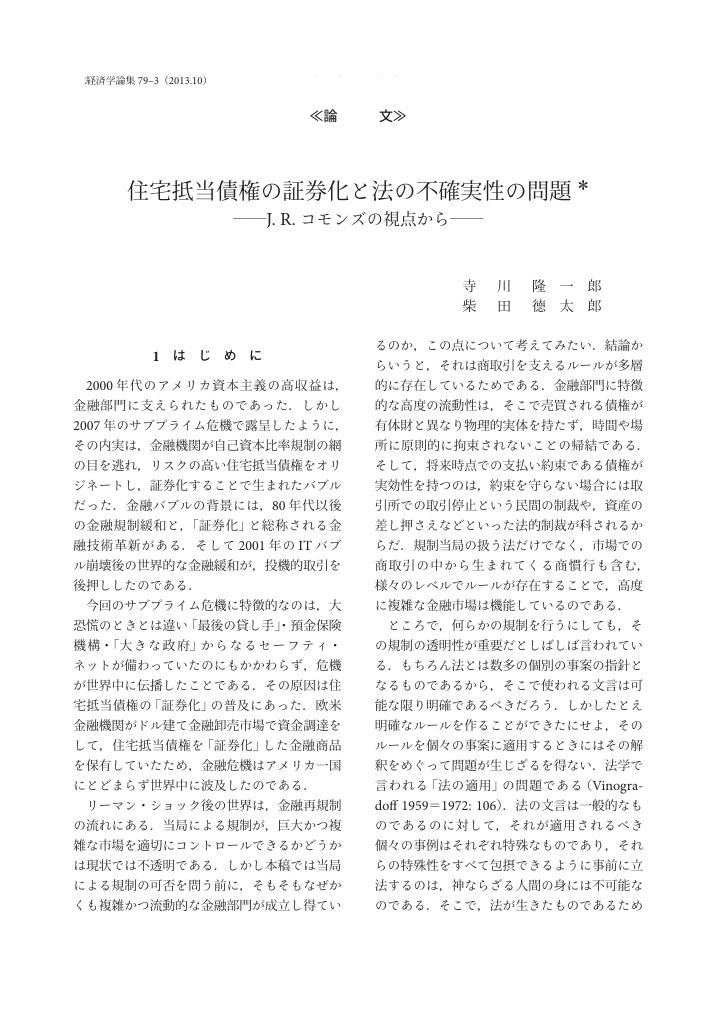1 0 0 0 OA 住宅抵当債権の証券化と法の不確実性の問題 ――J. R. コモンズの視点から――
- 著者
- 寺川 隆一郎 柴田 德太郎
- 出版者
- 東京大学大学院経済学研究科
- 雑誌
- 経済学論集 (ISSN:00229768)
- 巻号頁・発行日
- vol.79, no.3, pp.2-32, 2013-10-01 (Released:2022-03-25)
- 参考文献数
- 40
1 0 0 0 OA 初期コモンズの通貨制度改革構想
- 著者
- 寺川 隆一郎
- 出版者
- 経済学史学会
- 雑誌
- 経済学史研究 (ISSN:18803164)
- 巻号頁・発行日
- vol.60, no.2, pp.20-41, 2019 (Released:2019-09-04)
- 被引用文献数
- 1 1
Abstract: While John R. Commons (1862―1945) is well known for his studies on American labor and Anglo-American economic law, even researchers of the history of economic thought are unfamiliar with his career-long devotion to the study of monetary questions. It was not until the 1990s that a few researchers discovered that Commons, in his later years, developed the concept of endogenous money, according to which money is a dynamic process that gets created, transferred, and extinguished alongside ongoing economic transactions. However, it is still unclear how he developed the concept in his long career as an economist. To tackle this question, this study focuses on Commons in his earliest days and reexamines his works on monetary reform published in the aftermath of the financial panic of 1893. The salient features of Commons’ money reform plan can be summarized as follows: (1) adopting “bullion notes” as base monies that are redeemable in silver at its market price, and (2) establishing a monetary commission that compiles the price index and accordingly keeps the average price at a constant level through the silver bullion open market operations. To understand the true scope of the plan, this study revisits its historical context, that is, the establishment of the international gold standard after 1873, the 1893 banking and dollar crisis, and the debate on the national banking currency after the crisis. It eventually demonstrates Commons’ early theory of money and credit, which underlies his reform plan. The study finds that Commons takes a nominalist position on the nature of money, adopts an endogenous approach on credit money supply, and recognizes a governmental role in credit administration in his money reform plan. JEL classification numbers: B15, B31, E42.
